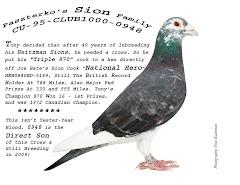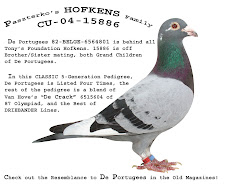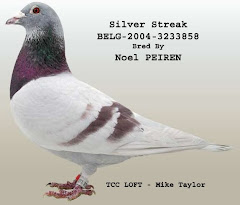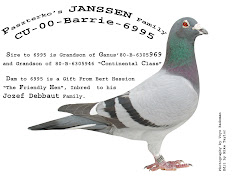Naturenews
Published online 7 April 2010
The homing pigeon is a variety of domesticated Rock Pigeon (Columba livia domestica) that has been selectively bred to be able to find its way home over extremely long distances. The wild rock pigeon has an innate homing ability, meaning that it will generally return to its own nest and its own mate. This made it relatively easy to breed from the birds that repeatedly found their way home over long distances. Flights as long as 1800 kilometers (1,118 miles) have been recorded by birds in competition pigeon racing. Their average flying speed over moderate distances is around 48 km/h (30 mph), but speeds of up to 95 km/h (59 mph) have been observed.
Homing pigeons are called carrier pigeons when they are used to carry messages. This is possible where a message is written on thin light paper (such as cigarette paper) and rolled into a small tube attached to the bird's leg; this is called pigeon post. Pigeons can only go back to one "mentally marked" point that they have identified as their home. So "pigeon mail" can only work when the sender is actually holding the receiver's pigeons. White homing pigeons are used in Release Dove ceremonies at weddings, funerals, and some sporting events.
Navigation
Research has been performed with the intention of discovering how pigeons, after being transported, can find their way back from distant places they have never visited before. Most researchers believe that homing ability is based on a "map and compass" model, with the compass feature allowing birds to orient and the map feature allowing birds to determine their location relative to a goal site (home loft) While the compass mechanism appears to rely on the sun, the map mechanism has been highly debated. Some researchers believe that the map mechanism relies on the ability of birds to detect the Earth's magnetic field. It is true that birds can detect a magnetic field, to help them find their way home. A light-mediated mechanism that involves the eyes and is lateralized has been examined somewhat, but recent developments have implicated the trigeminal nerve in magnetoception. Research by Floriano Papi (Italy, early 1970s) and more recent work, largely by Hans Wallraff, suggests that instead pigeons orient themselves using the spatial distribution of atmospheric odors, known as olfactory navigation (see the August 20, 2005 issue of Science News.). Near their home lofts, in areas they have previously visited, pigeons probably are guided by visual landmarks.
Various experiments suggest that different breeds of homing pigeons rely on different cues to different extents. Charles Walcott at Cornell was able to demonstrate that one strain of pigeons was confused by a magnetic anomaly in the Earth that had no effect on another strain of birds. Other experiments have shown that altering the perceived time of day with artificial lighting or using air conditioning to eliminate odors in the pigeons' home roost affected the pigeons' ability to return home.
Some research also indicates that homing pigeons navigate by following roads and other man-made features, making 90 degree turns and following habitual routes, much the same way that humans navigate.
Homing pigeons, the winged messengers of the Indian police force, did perform for more than 50 years of distinguished service.
About 800 birds from the Police Pigeon Service, which have defied cyclones and floods to deliver urgent police messages between remote stations in the north-eastern state of Orissa since 1946, may be retired under government proposals that suggest e-mail and telephones make the birds obsolete in 2002.
Dr.A.Jagadeesh Nellore(AP),India
Read more ...














